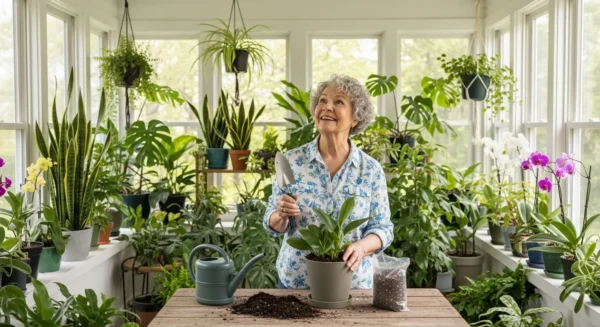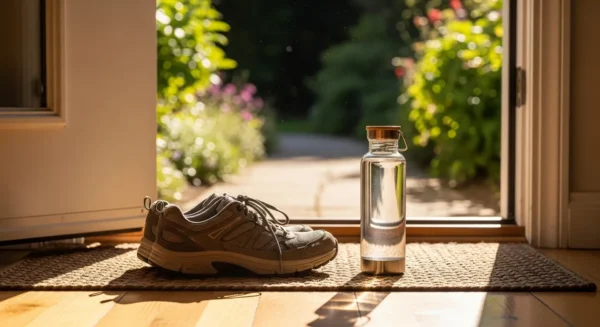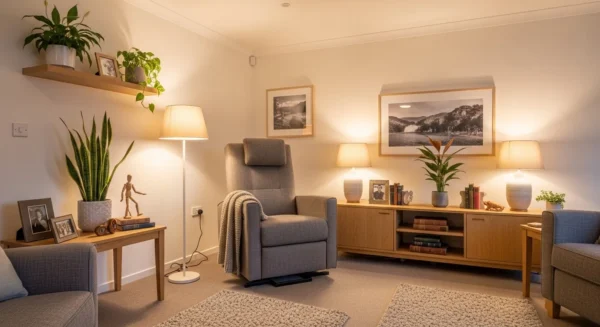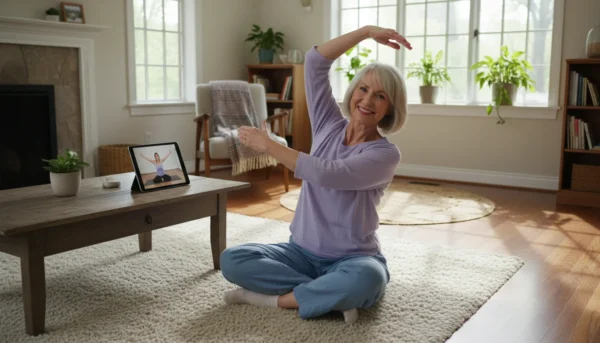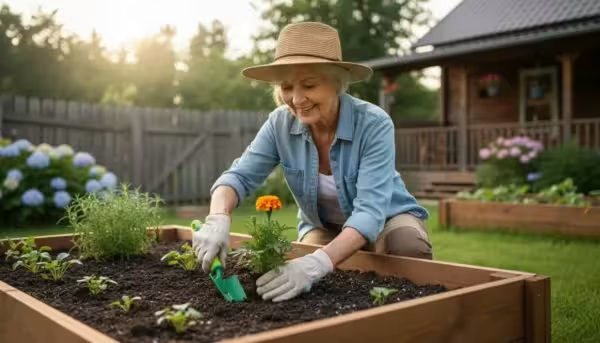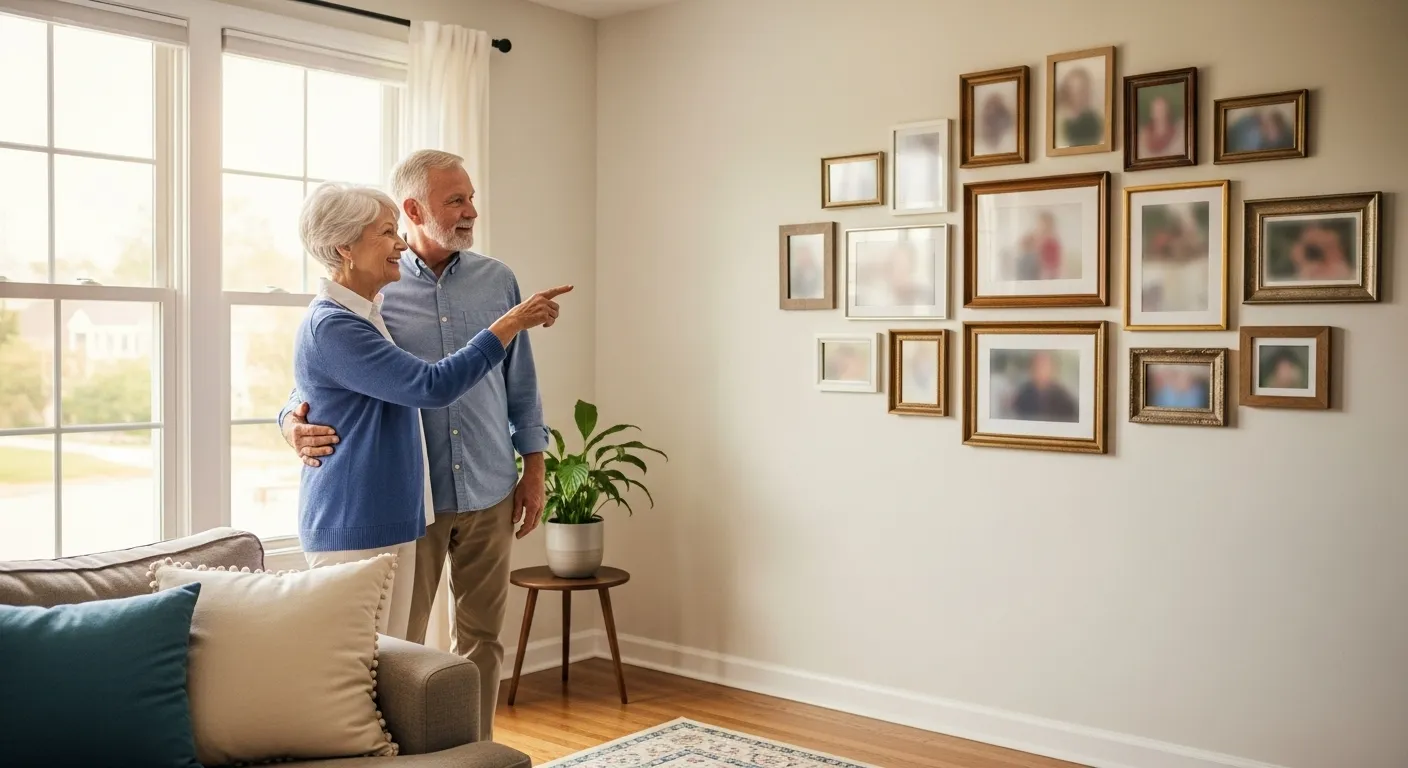
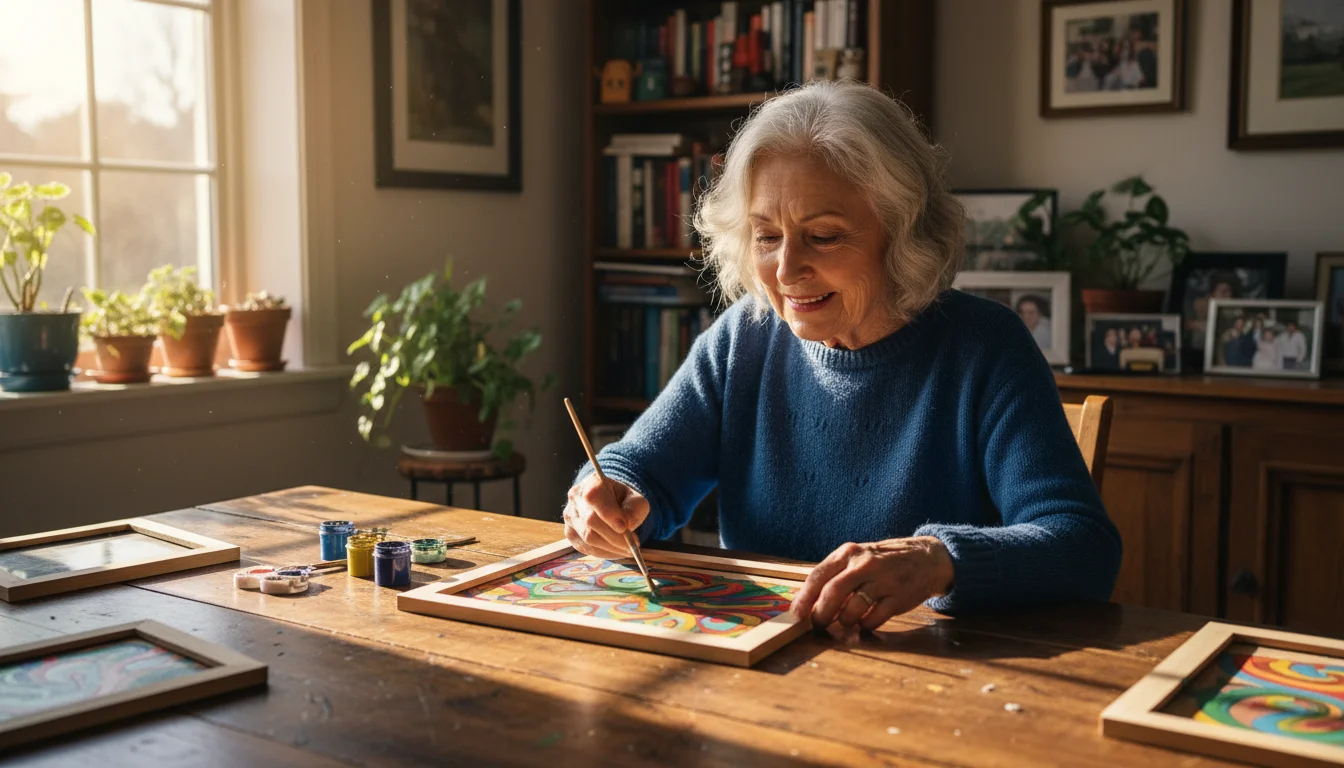
Introduction: Embracing a Creative Touch in Your Retirement Home
Retirement. For many of us, it’s a word that sings with possibility. It’s the time we reclaim our schedules, pursue long-held passions, and perhaps, finally, travel to that place we’ve always dreamed of. But amid all the exciting plans for getting out and about, there’s an equally rewarding journey to be had right within our own four walls. Our homes, which may have once been bustling hubs of school runs and career demands, can now transform into personal sanctuaries that truly reflect who we are in this new, vibrant chapter of life.
This is where the joy of Do-It-Yourself, or DIY, comes in. It’s more than just a hobby; it’s a way to pour your personality, your stories, and your creativity into the very space you inhabit. It’s about looking at an old, forgotten bookcase and seeing a bright, cheerful new centerpiece. It’s about transforming a blank wall into a beautiful gallery of treasured family memories. These projects offer a wonderful sense of accomplishment, keep our minds sharp and our hands busy, and ultimately, allow us to craft a living space that is not just a house, but a home tailored perfectly for our retirement years.
Whether you’re a seasoned woodworker or someone who has never so much as picked up a paintbrush, there is a world of fun and fulfilling DIY ideas waiting for you. This is your time to experiment, to learn, and to create a home that feels uniquely, wonderfully you. Let’s explore some ways you can get started.
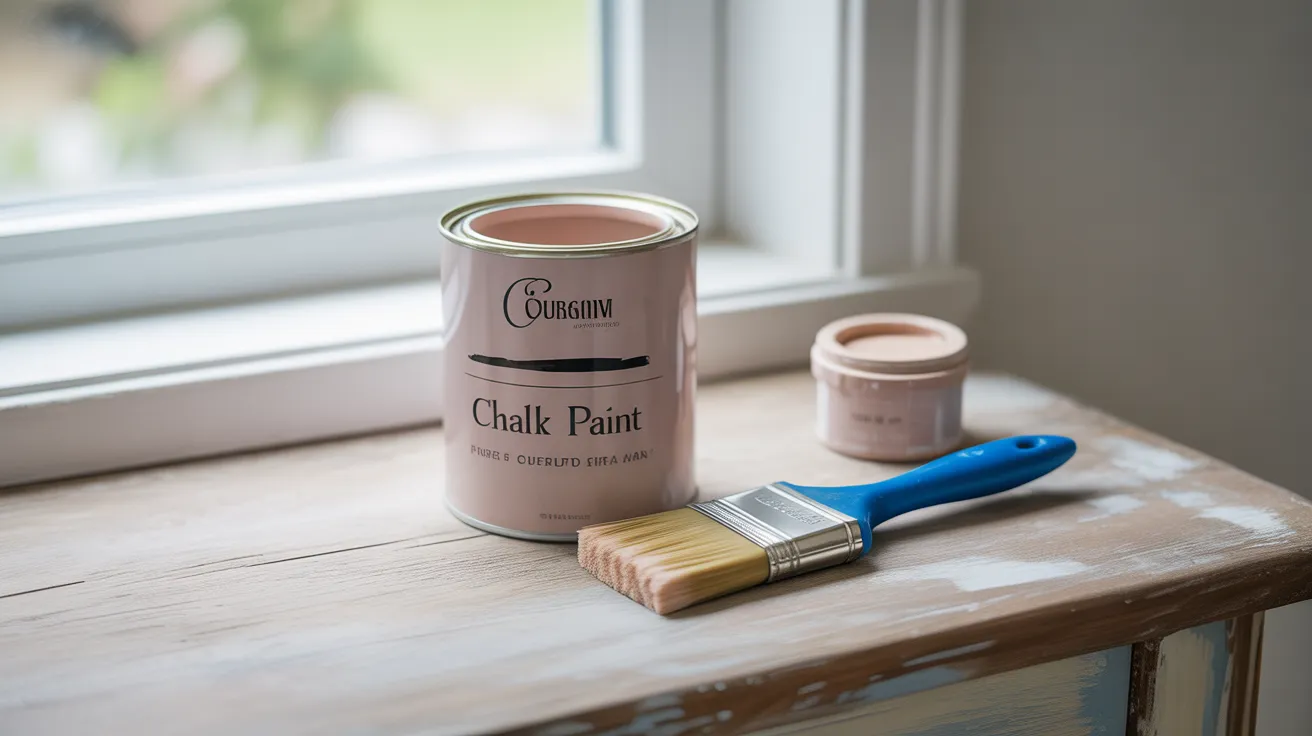
Finding Your Perfect Project: Exploring DIY Ideas for Every Skill Level
The beauty of DIY is that it scales to any level of comfort, skill, or ambition. The goal isn’t to become a master carpenter overnight, but to find projects that bring you joy and a sense of pride. Think about what your home needs or what little corner could use a splash of personality. Here are a few DIY ideas, ranging from simple afternoon activities to more involved weekend endeavors, to get your creative gears turning.
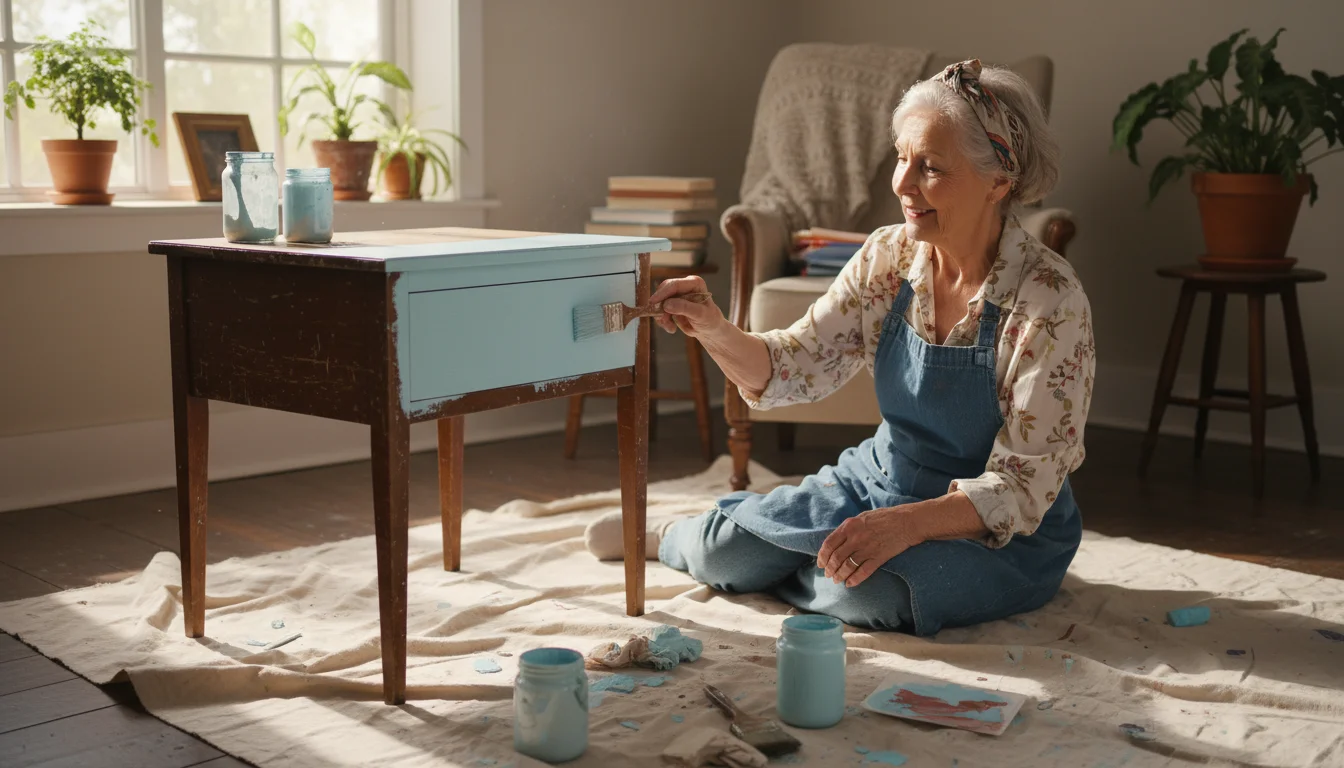
Simple Starts and Upcycling Magic
If you’re new to the world of DIY, starting small is the key to building confidence. These projects require minimal tools and investment but deliver maximum satisfaction.
Give Furniture a Fresh Face: Do you have a tired-looking side table, a dated nightstand, or a sturdy but bland bookshelf? A fresh coat of paint can work wonders! Chalk paint is particularly popular among creative seniors because it often requires no sanding or priming. Simply clean the piece, apply a coat or two of paint, and maybe add a layer of wax for protection. You can even get creative by changing out the drawer pulls or knobs for an extra dose of personality. It’s a simple project that can completely change the feel of a room.
No-Sew Custom Pillows: You don’t need to be a seamstress to create beautiful custom throw pillows. Purchase some fabric you love—you can find affordable remnants at craft stores—and a bottle of permanent fabric glue. Simply cut the fabric to size (leaving a border), glue three sides together, stuff it with a pillow insert, and glue the final side shut. It’s a fantastic way to add a pop of color or a new pattern to your sofa or bed.
Upcycle with Purpose: Before you toss that empty glass jar or tin can, think about its potential. A collection of glass pasta sauce jars can be painted and decorated with twine to become charming rustic vases. Coffee cans, with their labels removed and a coat of spray paint, make excellent organizers for your craft supplies or kitchen utensils. This approach to home décor is not only creative but also wonderfully eco-friendly.
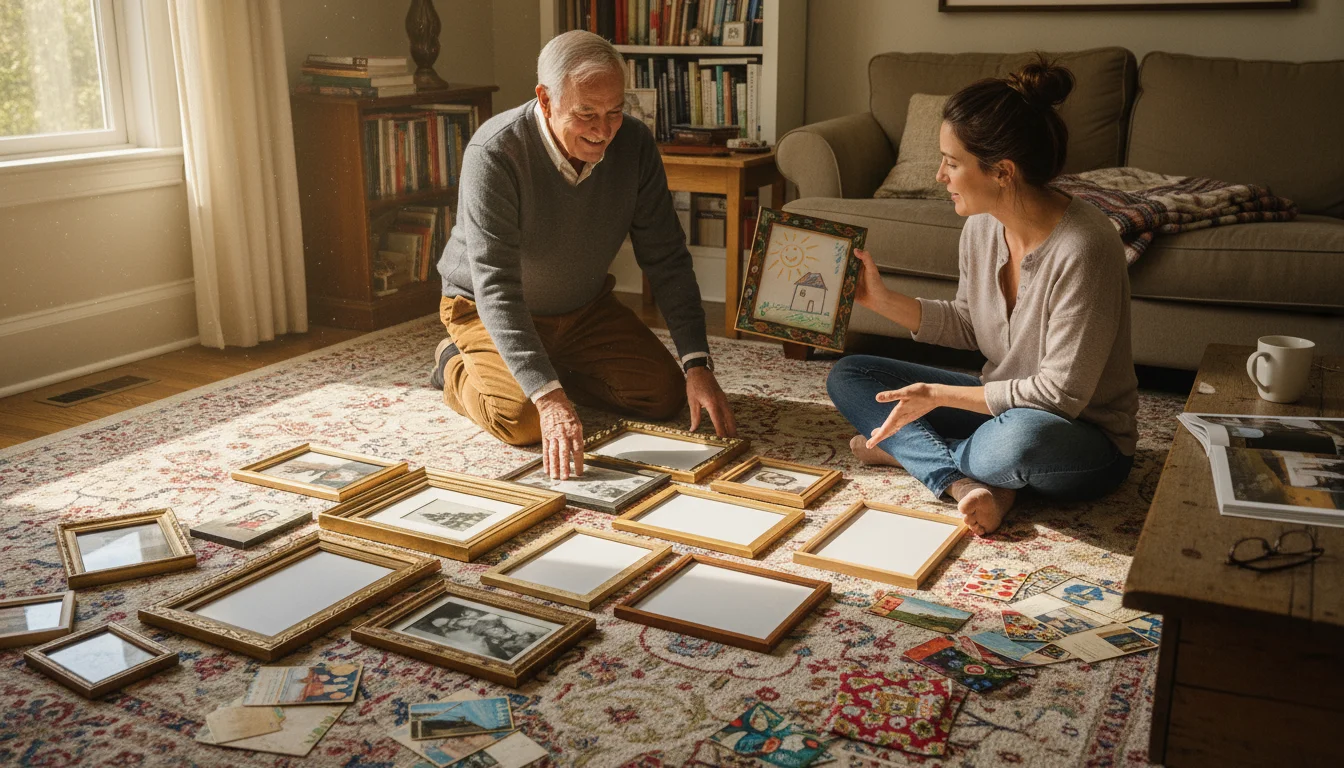
Intermediate Creations for a Personal Touch
Feeling a bit more adventurous? These projects might require a few more tools or a little more planning, but they allow for a deeper level of personalization and can make a significant impact on your home.
Create a Memory Gallery Wall: This is one of the most personal and rewarding home décor projects you can undertake. Gather a collection of frames in various sizes and styles—you can find inexpensive ones at thrift stores and paint them to match. Then, fill them with your favorite family photos, postcards from your travels, your children’s or grandchildren’s artwork, or even beautiful fabric swatches. Before you start hammering nails, lay the frames out on the floor to perfect your arrangement. This living display of your life’s best moments is a constant source of joy.
Build a Raised Garden Bed: If bending and kneeling in a traditional garden has become a challenge, a raised garden bed is the perfect solution. It brings the garden up to a comfortable height, making planting and weeding much easier on your back and knees. You can find simple plans online that require just a few pieces of lumber, a drill, and some screws. Imagine stepping out your back door to pick fresh herbs for dinner or to tend to your beautiful, blooming flowers. For more outdoor inspiration, travel and recreation information for seniors is available at the National Park Service. For local programs, check your city or county’s Parks and Recreation department website.
Reupholster a Dining Chair Seat: Do your dining chairs have great bones but stained or outdated fabric? Recovering the seat cushion is a surprisingly simple upholstery project. In most cases, the seat is just a piece of wood that unscrews from the chair frame. You can then use a staple gun to attach a new piece of sturdy fabric over the old one (or after removing the old one), and then screw the seat back into place. It’s a weekend project that can make your entire dining set look brand new.
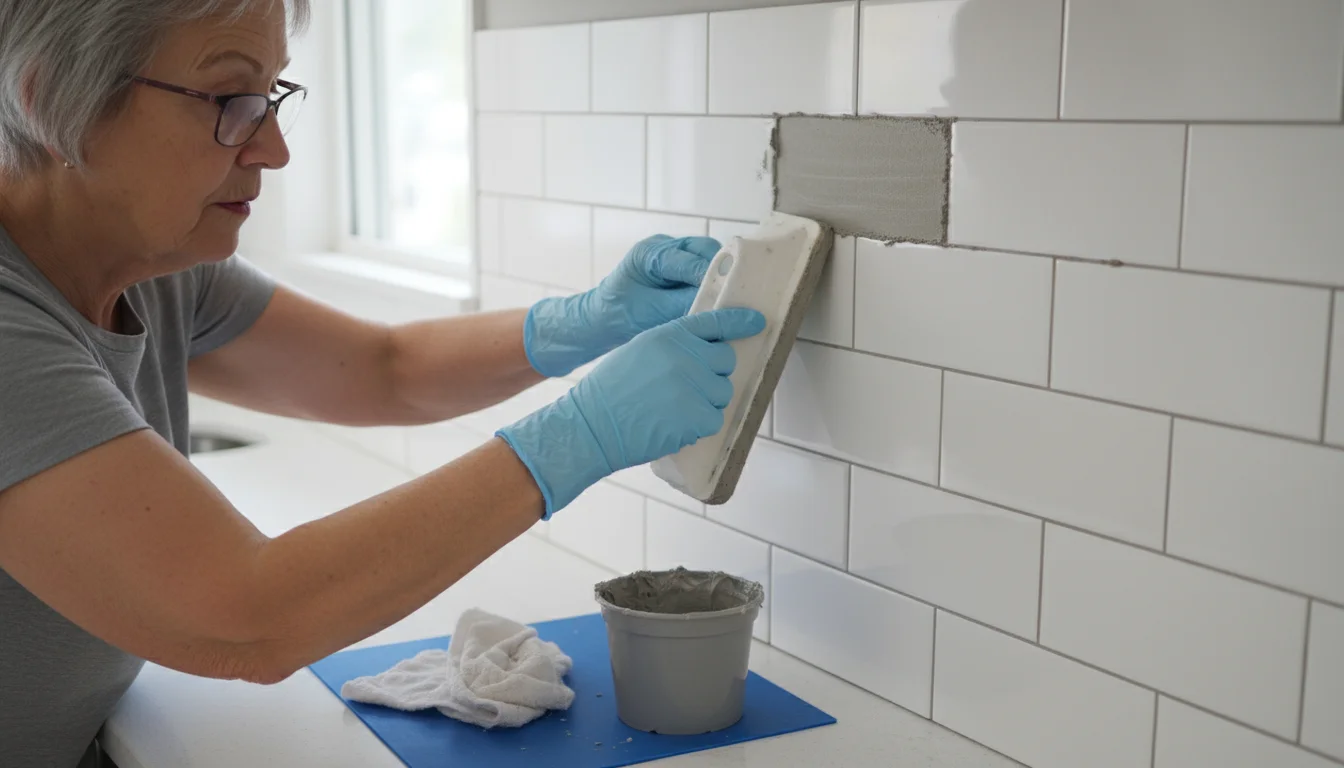
Advanced Projects for the Seasoned DIY-er
For those who are comfortable with tools and ready for a challenge, these larger projects can bring a profound sense of accomplishment and add significant value and character to your home.
Install a Kitchen Backsplash: Tiling a backsplash may seem intimidating, but with modern products like peel-and-stick tile mats and pre-mixed grout, it’s more accessible than ever. It’s a project that requires patience and precision, but the result is a stunning, custom look for your kitchen that completely elevates the space. Watch a few online tutorials, take your time with the measurements, and you’ll be amazed at what you can do.
Build a Custom Bookshelf or Storage Unit: If you have a specific nook or wall in your home that could use some storage, why not build something to fit it perfectly? Designing and building a piece of furniture from scratch is the ultimate DIY challenge. It allows you to choose the wood, the finish, and the exact dimensions to meet your needs. It becomes not just a piece of furniture, but a handcrafted legacy item filled with pride.
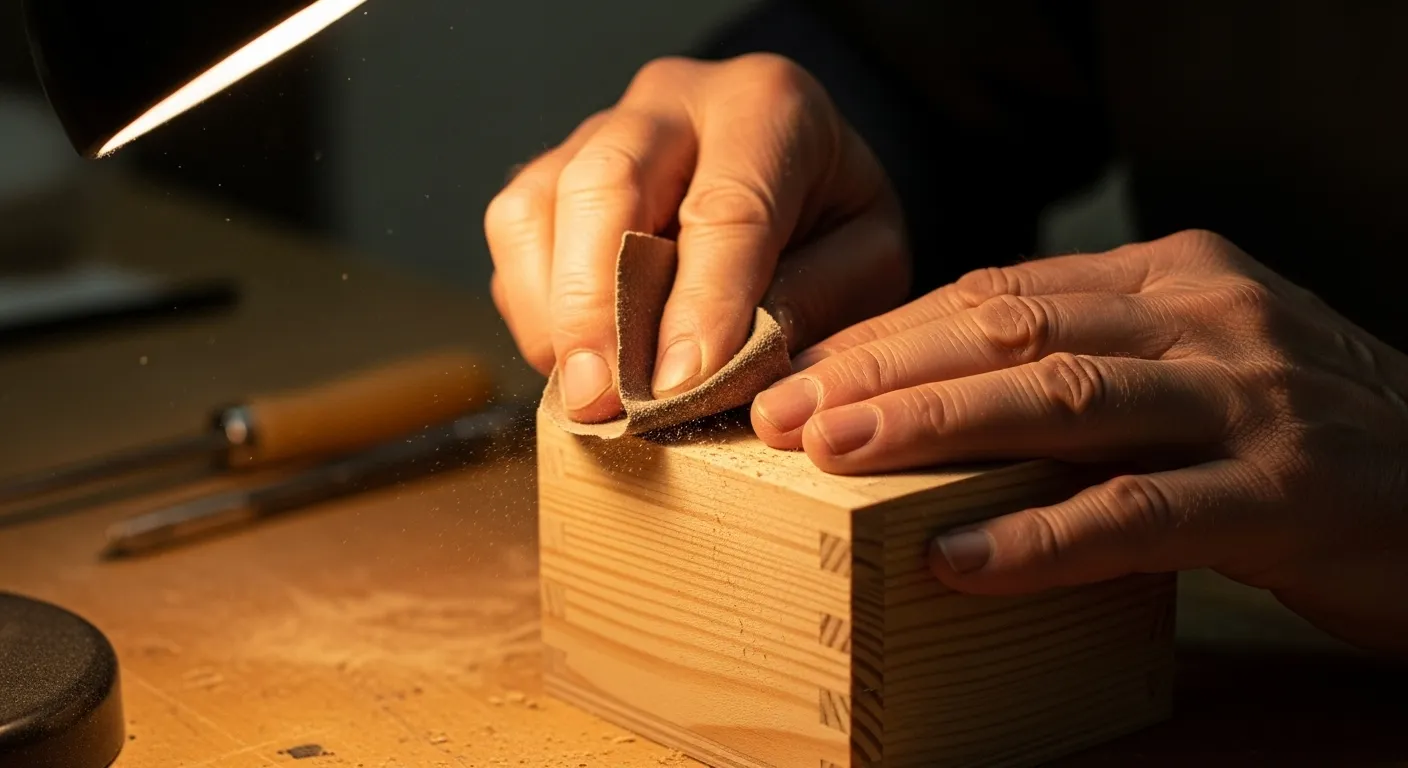
Tips for Getting Started: Setting Up Your Creative Space and Finding Inspiration
Embarking on a DIY journey is exciting, but a little preparation goes a long way. Setting yourself up for success means creating a safe, organized environment where your creativity can flourish.
Designate a Creative Corner: You don’t need a massive workshop. A corner of a spare bedroom, a well-lit area in the garage, or even a small, sturdy table can serve as your project headquarters. The key is to have a dedicated space where you can leave a project mid-way without it taking over your living room. Good lighting is essential, so consider adding a task lamp. Organization is your best friend; use clear plastic bins or labeled jars to keep screws, brushes, and other small items tidy and easy to find.
Gather Your Basic Toolkit: You can accomplish a surprising number of projects with just a few essential tools. A good starter kit might include a hammer, a set of screwdrivers, a measuring tape, a level, sandpaper in various grits, and a set of quality paintbrushes. If you’re ready to invest in a power tool, a lightweight, cordless drill is incredibly versatile for everything from hanging pictures to assembling furniture.
Prioritize Safety Above All: This is the most important rule of DIY. Always wear safety glasses to protect your eyes from dust and debris. Use gloves when painting, staining, or handling rough materials. When working with paints, stains, or adhesives, ensure you are in a well-ventilated area—open a window or set up a fan. Most importantly, listen to your body. Work in shorter sessions, take frequent breaks, and never push yourself past your physical limits. The project will be there tomorrow.
Where to Find Inspiration: The world is full of wonderful DIY ideas! Websites like Pinterest are endless visual catalogues of inspiration. Simply searching for “DIY home décor” or “upcycled furniture ideas” will yield thousands of images to spark your imagination. YouTube is an incredible resource for step-by-step video tutorials that walk you through every stage of a project. And don’t forget the old-fashioned way—browse magazines and books from your local library or bookstore. For lifestyle and community resources, AARP offers extensive articles and local chapters. Opportunities to give back can be found via AmeriCorps Seniors.
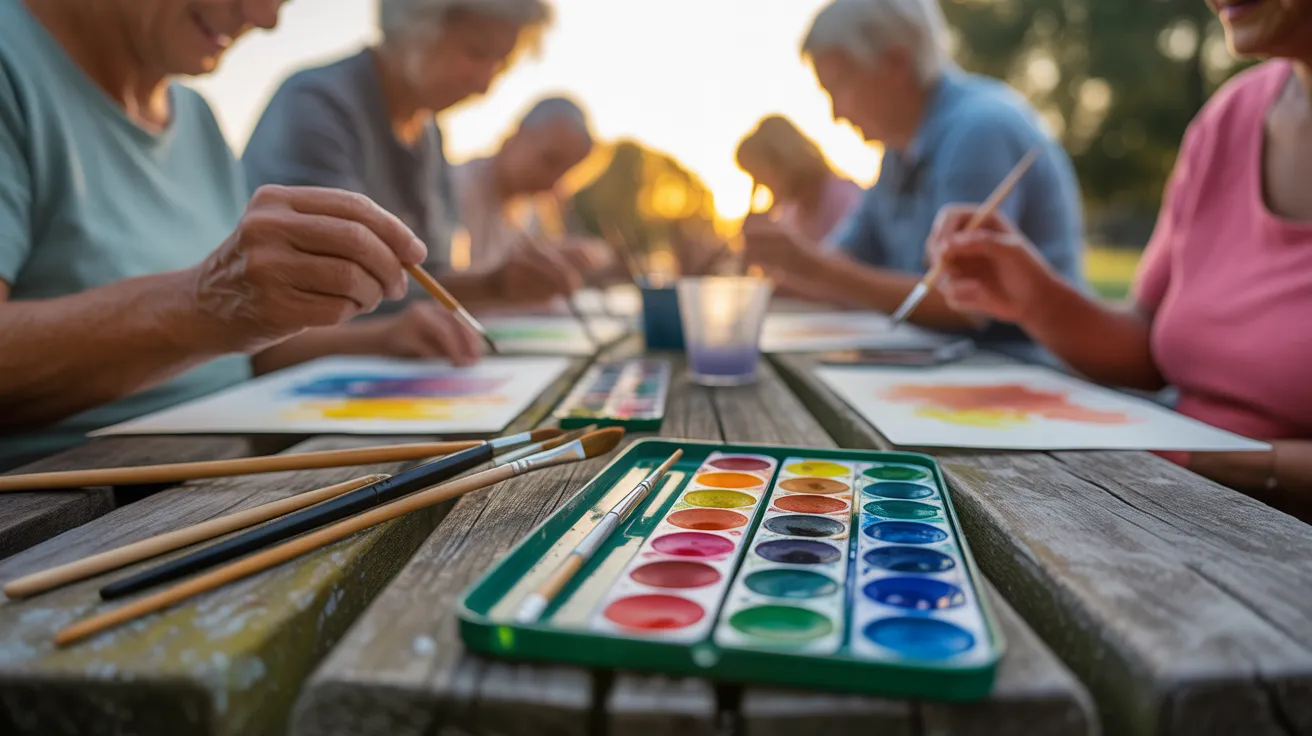
A Shared Perspective: Lessons from Fellow Creative Seniors
Sometimes the best motivation comes from hearing about the experiences of others. Throughout my community, I’ve met so many fellow retirees who have discovered a passion for creating and personalizing their homes. Their stories are a wonderful reminder that it’s never too late to learn a new skill.
My friend Beverly, for example, always felt she wasn’t “artistic.” She started small, simply painting a few terracotta pots for her patio. She enjoyed it so much that she moved on to painting a small end table. Today, her home is filled with beautifully repainted furniture, each piece a vibrant expression of her personality. She told me the key was letting go of the fear of making a mistake. “It’s just paint!” she laughed. “If you don’t like it, you can always paint over it.”
Then there’s Frank from my weekly coffee group. After retiring, he found himself with too much time on his hands. He took a beginner woodworking class at the local community center and discovered a hidden talent. His first project was a simple birdhouse. Now, he has built custom window boxes for half the houses on his street and is the go-to guy for small repairs. He says the camaraderie of the class was just as important as the skills he learned. It gave him a new sense of purpose and a community of fellow builders.
These stories share a common thread: the journey is just as important as the destination. The real joy comes from the process of learning, the focus of working with your hands, and the immense satisfaction of stepping back and saying, “I made that.” Don’t worry about perfection. Those little imperfections are what give your creations character and tell the story of your hand in making them.

Resources to Spark Your Creativity
Ready to dive in? There are countless resources available to guide and inspire you on your DIY journey. Here are a few places to start exploring:
Online Inspiration and Tutorials:
YouTube: This is your free, 24/7 DIY university. Search for channels focused on beginner woodworking, furniture flipping, or crafting for adults. Look for creators who explain things clearly and prioritize safety.
Pinterest: A visual discovery engine perfect for finding inspiration. Create “boards” to save your favorite DIY ideas, home décor styles, and color palettes.
DIY Blogs and Websites: Many talented creators share free, detailed project plans and tutorials on their personal blogs. A quick search for a project you’re interested in, like “how to build a floating shelf,” will bring up many helpful guides.
Local and Community-Based Learning:
Home Improvement Stores: Big-box stores like Home Depot and Lowe’s often host free or low-cost workshops on topics like tiling, painting techniques, and basic home repairs. Check their websites for local schedules.
Community Centers and Colleges: Your local parks and recreation department or community college likely offers adult education classes in everything from pottery and painting to woodworking and upholstery. This is a fantastic way to learn in a supportive, hands-on environment.
Libraries: Don’t underestimate your local library! It’s a treasure trove of books and magazines filled with project ideas, plans, and detailed instructions for every skill level.
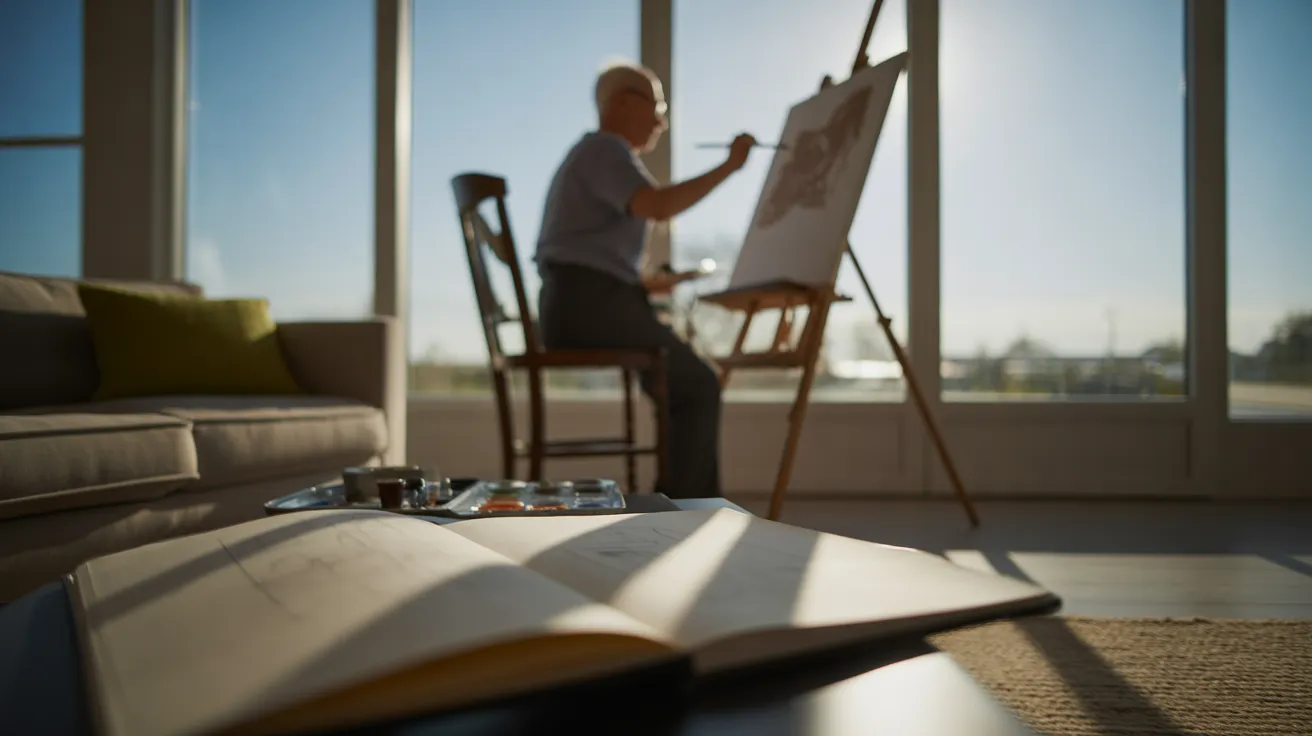
Frequently Asked Questions About DIY in Retirement
It’s natural to have a few questions before you start. Here are answers to some common concerns we hear from seniors interested in DIY.
I have some physical limitations. Are there still DIY projects I can do?
Absolutely! The key is to choose projects that match your abilities. Focus on tabletop activities like painting picture frames, creating mosaic art, or no-sew fabric projects. Container gardening on a porch or windowsill is a wonderful alternative to traditional gardening. Always opt for lightweight tools, and remember to work in short, comfortable intervals.
I’m on a fixed income. Isn’t this an expensive hobby?
It doesn’t have to be! In fact, DIY can be a great way to save money. The most budget-friendly approach is upcycling—transforming things you already own or find for cheap at thrift stores and yard sales. Hardware stores often have a discounted “oops paint” section where you can find mistinted colors for a fraction of the price. Many satisfying projects, like creating a gallery wall with existing photos, cost next to nothing.
I’m worried I’ll make a mistake and ruin the project. How do I get over that fear?
This is a very common feeling, but try to reframe it. Every expert was once a beginner. Start with a low-stakes project, like painting a cheap thrift store frame. If it doesn’t turn out perfectly, you’ve lost very little and learned a lot. Remember that many “mistakes” are fixable. A drip of paint can be sanded away, a crooked nail can be removed. Embrace the process as a learning experience, not a test.
My spouse or partner isn’t interested in DIY. How can I get started on my own?
That’s perfectly fine! A hobby can be a wonderful thing to enjoy on your own. Carve out a small space that is just for you and your projects. Joining a local class or a club is a fantastic way to connect with other creative seniors who share your interest. You might find a new community of friends, and who knows—your enthusiasm might eventually inspire your partner to see what all the fun is about!
Disclaimer: The advice in this article is based on general experience and is for informational purposes. Please research local opportunities and consult with relevant experts before making significant lifestyle changes or purchases.
For expert guidance on senior health and finance, visit AARP, Alzheimer’s Association, American Heart Association and Benefits.gov.
|
Fact-Checked Content
Our editorial team reviews all content for accuracy and updates it regularly. Learn about our editorial process →
|



